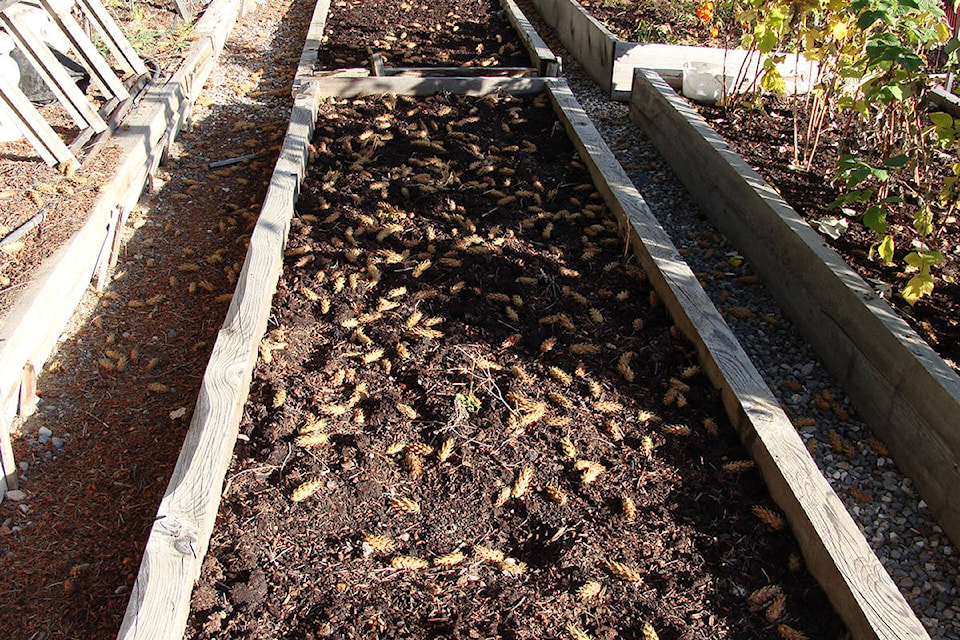While living in Douglas fir forests for the last four decades, we have had lots of time to interact with the rodent populations. While mice, ground squirrels, pack rats and some bird species no doubt use the seeds and growing tips of the fir trees, the red squirrels are no doubt the most obvious users.
Along with the sound of geese and cranes heading south in the magnificent V formations, another sound in the fall is the drumming sound of cones hitting the ground or even more magnified is the sound when they land on the various metal roofs around our property. Once, while hunting in the west Chilcotin, I was convinced that there was a large animal moving about in the woods. After further investigation it turned out to be a busy squirrel dropping cones which were bouncing off some dry branches.
The amount of seed consumed by squirrels is obvious when you come across one of the feeding stations. After dropping the cones, the squirrels gather them for easy access in the winter months. One of the favourite spots is an old fallen tree. Watching them feed can be quite entertaining as they extract the seed in much the same way as we eat corn off the cob. They may not have fingers but they are quite capable of handling the cones with their front feet. After decades of use, the feeding areas contain large mounds of cone scales which are discarded as the squirrels harvest the seeds.
Most nests are build in the branches of a mature tree and consist of small branches, grass, moss and anything the helps insulate them from the cold. They are not true hibernators like bears or marmots but come out to feed during the winter when the temperature rises sufficiently.
They can sometimes be very destructive if they decide to live in your house where the insulation is no doubt better than their tree nests. They also use cones to fill up most of the boxes that I had in one of my sheds. With the abundant cone crop this year, I have been constantly removing the cones all over our garden. Rather than adding them to the compost, I worked an arrangement with Kent Watson from the Williams Lake Community Forest that they could use them for their reforestation program.
For the last two months I no sooner collected a bucket of cones and the squirrels would drop some more. As of this week I have a total of 10 bags (20 litres per bag) from an area about 40 by 20 feet.
I am not sure how important the squirrel caches are for fir tree regeneration since the trees seem quite capable of scattering the seeds over a wide area using the spinning seeds along with wind dispersal. In this case, I think the relationship is more one sided, with the rodents being very dependent on the seeds along with protection from the cold and predators. After thousands of years existing together there are no doubt some benefits to both species but I am just not smart enough to see the obvious.
For me one thing for sure is this will be the first time there has been a mutually beneficial relationship with these pesky rodents.
Jim Hilton is a professional agrologist and forester who has lived and worked in the Cariboo-Chilcotin for the past 40 years. Now retired, Hilton still volunteers his skills with local community forests organizations.
